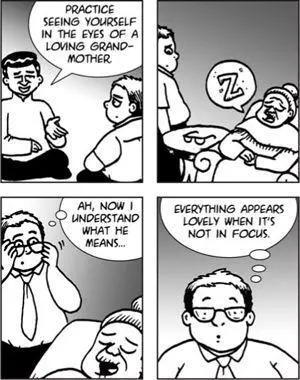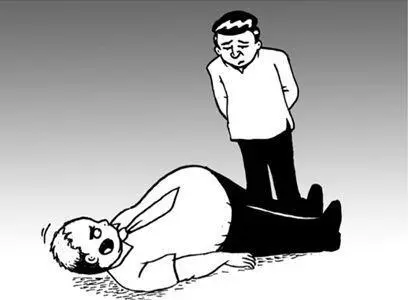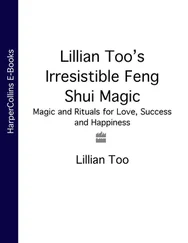Tan, Chade-Meng - Search Inside Yourself - The Unexpected Path to Achieving Success, Happiness (and World Peace)
Здесь есть возможность читать онлайн «Tan, Chade-Meng - Search Inside Yourself - The Unexpected Path to Achieving Success, Happiness (and World Peace)» — ознакомительный отрывок электронной книги совершенно бесплатно, а после прочтения отрывка купить полную версию. В некоторых случаях можно слушать аудио, скачать через торрент в формате fb2 и присутствует краткое содержание. Год выпуска: 2012, Издательство: Harper Collins, Inc., Жанр: Старинная литература, на английском языке. Описание произведения, (предисловие) а так же отзывы посетителей доступны на портале библиотеки ЛибКат.
- Название:Search Inside Yourself: The Unexpected Path to Achieving Success, Happiness (and World Peace)
- Автор:
- Издательство:Harper Collins, Inc.
- Жанр:
- Год:2012
- ISBN:нет данных
- Рейтинг книги:4 / 5. Голосов: 1
-
Избранное:Добавить в избранное
- Отзывы:
-
Ваша оценка:
- 80
- 1
- 2
- 3
- 4
- 5
Search Inside Yourself: The Unexpected Path to Achieving Success, Happiness (and World Peace): краткое содержание, описание и аннотация
Предлагаем к чтению аннотацию, описание, краткое содержание или предисловие (зависит от того, что написал сам автор книги «Search Inside Yourself: The Unexpected Path to Achieving Success, Happiness (and World Peace)»). Если вы не нашли необходимую информацию о книге — напишите в комментариях, мы постараемся отыскать её.
Search Inside Yourself: The Unexpected Path to Achieving Success, Happiness (and World Peace) — читать онлайн ознакомительный отрывок
Ниже представлен текст книги, разбитый по страницам. Система сохранения места последней прочитанной страницы, позволяет с удобством читать онлайн бесплатно книгу «Search Inside Yourself: The Unexpected Path to Achieving Success, Happiness (and World Peace)», без необходимости каждый раз заново искать на чём Вы остановились. Поставьте закладку, и сможете в любой момент перейти на страницу, на которой закончили чтение.
Интервал:
Закладка:
After creating the intention, the next thing to do is to follow your breath.Just bring a gentle attention to the process of breathing. That is all.

“Breath! Breath ! I said follow breath !”
The classical analogy of this process is a guard standing at the city gates watching people go in and out of the city. He does not do anything; he only watches people go in and out with quiet vigilance. In the same way, you can think of your mind as a guard vigilantly watching your breath go in and out. You may pretend to have a big stick if it makes you feel cool. A really beautiful alternative analogy, suggested by my friend and fellow Search Inside Yourself teacher Yvonne Ginsberg, is a butterfly resting on the petal of a flower while the gentle breeze lifts and lowers it. Your attention is the butterfly and the petal is your breath.
At this point, your attentionmay gather. You may find yourself in a state where your mind is calm and concentrated. You may even be in the flow, just being with your breath. With enough practice, this state can last a long time, but for most people, this may go on for a few seconds. And then we fall into distraction.
In that state of distraction, we may start ruminating, worrying, or fantasizing. Sometimes, I even fantasize about not worrying. After a while, we realize our attention has wandered away. The default reaction of most people at this point is self-criticism. We start telling ourselves stories about how horrible we are as meditators and, by extension, not particularly good people either. Happily, there is a skillful way to deal with this.
The first thing to do is to simply regain attentional focusby bringing attention back to the process of breathing. The second thing to do is to remember an important insight we discussed earlier in this chapter—that this process of bringing a wandering attention back is like flexing your biceps during your gym workout. This is not failure; it is the process of growth and developing powerful mental “muscles.”
The third thing to do is to become aware of your attitudetoward yourself. See how you treat yourself and how often you engage in nasty gossip about yourself. If possible, shift the attitude toward self-directed kindness and curiosity. This shift is, by itself, another meditation. Once again, it is about forming mental habits.
Every time we create an attitude of self-directed kindness, we deepen that habit a little bit more, and if we do it a lot, we may overcome a lot of our self-hatred and even become our own best friend. (I am reminded of a very funny line in the movie Space Balls , “I’m a mog: half man, half dog. I’m my own best friend!”)
One beautiful way of doing this is to create what the Zen folks call the “grandmother mind”: adopting the mind of a loving grandmother. To a loving grandmother, you are beautiful and perfect in every way. No matter how much mischief you cause, you are perfect and Grandma loves you just as you are. It does not mean Grandma is blind to your faults, nor does it mean she allows you to hurt yourself. Sometimes, she even intervenes sternly to stop you from getting yourself into big trouble. But no matter what, you are perfect to her and she loves you.
The practice is to see yourself in the eyes of a loving grandmother.

And finally, return to following your breath and, whenever it is helpful, remind yourself of your intention. Welcome back.
Posture and Stuff
You can really meditate in any posture you want. Traditional Buddhism, for example, defines four main meditation postures: sitting, standing, walking, and lying down, which seems to cover just about everything. Those Buddhists are greedy.
When choosing a meditation posture for yourself, there is only one thing to remember. Just one. The best meditation posture is one that helps you remain alertand relaxedat the same time for a long period of time. That means, for example, you probably do not want a posture where you slouch, since that is not conducive to alertness, and you also do not want a posture that requires you to stiffen your back, since that is not conducive to relaxation.
Happily for us, a sitting posture optimized for both alertness and relaxation has already been developed over the thousands of years that people have been meditating. This traditional posture is sometimes called the seven-point meditation posture. In brief, the seven are:
1. Back straight “like an arrow”
2. Legs crossed in “lotus position”
3. Shoulders relaxed, held up and back, “like a vulture”
4. Chin tucked in slightly, “like an iron hook”
5. Eyes closed or gazing into space
6. Tongue held against the upper palate
7. Lips slightly apart, teeth not clenched
We do not have to go into details about the traditional posture. I found the formal forms of this posture to be initially difficult for most modern people because we do not sit on the floor much. Instead, we are so used to sitting on chairs or couches with backrests that the traditional posture feels a bit awkward for many of us, at least in the beginning. So my suggestion to you is just to be aware that a functionally optimized traditional posture exists. Use it as a guideline, and find whatever posture is comfortable for you and, most importantly, helps you remain alert and relaxed. For example, it does not really matter if you cross your legs or use a backrest, or if you really prefer a posture involving a Hello Kitty soft doll on your head. As long as you can remain alert and relaxed, that is good.
Sogyal Rinpoche, a world-renowned Tibetan Buddhist teacher, suggests a fun and useful way to find your own posture. He recommends sitting like a majestic mountain. The idea is to think of your favorite mountain, say Mount Fuji or Mount Kilimanjaro, and then pretend to be that mountain when you sit. And there you are, Mister (or Miss) Mount Fuji, majestic, dignified, and awe inspiring. The nice thing is if you sit in a way that you feel majestic, dignified, and awe inspiring, it may also be the same posture that helps you become alert and relaxed, and it is kind of fun. Try this out and see if it works for you.

“But I more closely resemble a mountain with this posture.”
Another simple but useful suggestion comes from Search Inside Yourself instructor Yvonne Ginsberg:
Take a deep breath, lifting the rib cage. Letting go of the breath, let the shoulders drop while the spine stays gently in place. Thus embodying the flow of a river and the stability of a mountain, simultaneously .
One question I get asked a lot is whether your eyes should be open or closed when you meditate. The funny answer is: either, both, and neither. The real answer is, each has its upsides and downsides, so it is good to understand and play with the options.
Keeping your eyes closed during meditation is good; it helps you stay calm and keeps away visual distractions. The problem is it becomes easy to fall asleep. If you keep your eyes open, you have the reverse problem. You do not drift into sleep so easily anymore, but you get distracted by visual objects. What to do? What to do? There are two compromises, one temporal and one spatial.
Читать дальшеИнтервал:
Закладка:
Похожие книги на «Search Inside Yourself: The Unexpected Path to Achieving Success, Happiness (and World Peace)»
Представляем Вашему вниманию похожие книги на «Search Inside Yourself: The Unexpected Path to Achieving Success, Happiness (and World Peace)» списком для выбора. Мы отобрали схожую по названию и смыслу литературу в надежде предоставить читателям больше вариантов отыскать новые, интересные, ещё непрочитанные произведения.
Обсуждение, отзывы о книге «Search Inside Yourself: The Unexpected Path to Achieving Success, Happiness (and World Peace)» и просто собственные мнения читателей. Оставьте ваши комментарии, напишите, что Вы думаете о произведении, его смысле или главных героях. Укажите что конкретно понравилось, а что нет, и почему Вы так считаете.







![Chade-Meng Tan - Search Inside Yourself - Increase Productivity, Creativity and Happiness [ePub edition]](/books/703803/chade-thumb.webp)



